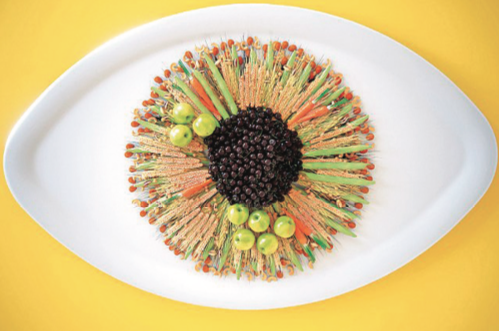A balanced diet and regular physical activities are the best ingredients to preserve good general health as well as visual health. It is known that healthy lifestyles, besides making us feel better in a general way, contribute to reducing the risk of developing serious eye diseases such as age-related macular degeneration, glaucoma or cataracts. Though carrots and blueberries are known as the ideal food for our visual health, other foods play an equally beneficial role. Science has identified a number of nutrients with important properties for the eyes: lutein, zeaxanthin, omega 3 fatty acids, zinc, beta carotene, vitamins C, D and E. These substances are normally present in the Mediterranean diet, rich in fruits, vegetables and fish. Even some of the food and dietary customs of our region have hidden virtues we may not be aware of.
Good news for tea lovers, especially green tea. Indeed, researchers in Hong Kong studying the catechin contained in green tea have discovered that these antioxidants have a beneficial effect beyond the digestive tract and intestinal canal reaching the crystalline lens, the retina and general eye tissues.
The Chinese University has conducted a study to assess if and how catechin were absorbed by the eye by means of food. Researchers concluded that catechin, mostly absorbed by the retina, has the capacity to reduce the damaging effects of oxidative stress believed to be responsible for various diseases such as macular degeneration and glaucoma. Even the benefits of coffee, the most popular drink in the world, are well-known. Italy is one of the countries where coffee is most popular and a recent study demonstrated that indulging in yet another cup of espresso could be beneficial. Pure coffee contains on average 1% of caffeine and 7 to 9% of chlorogenic acid (CLA), a powerful antioxidant which, in the right doses, could contribute to the prevention of eye diseases such as macular degeneration. In the study, published in the Journal of Agricultural and Food Chemistry, the eyes of a representative sample of mice were treated with nitric oxide to generate oxidative stress and the production of free radicals. As the Cornell University team of researchers immediately noted, the animals that had previously been treated with CLA did not show retinal damage, while in others the consequences were obvious. As far as the customs of the 'beautiful country' are concerned, drinking wine, especially red wine, is an opportunity we should not pass up.

Yes, indeed, even red wine is a valuable ally of visual health if there is no tendency to exaggerate. Drinking wine in moderation is not only good for the heart, it also protects the eyes, preventing aging. This positive feature of the 'nectar of the Gods' was brought to light by research carried out by the American University of St. Louis and published in The American Journal of Pathology. It demonstrated that the antioxidant substance called resveratrol contained in grapes and therefore in wine itself had a positive effect on visual health.
For those with a sweet tooth chocolate is a must. Indeed, the delicious news comes from the world of science where it is said that eating chocolate is not only good for our mood but it has benefits both for the heart and the eyes. The advantages for the visual system are linked in particular to the presence of flavonoids which, by acting on the ability of the arteries to remain relaxed and dilated, also ensure proper blood flow at the ocular level. Moreover, as was previously said, its antioxidant effect slows down the process of cellular degeneration caused by free radicals. The healthiest ingredient in chocolate is cocoa. The more there is the greater its beneficial properties will be.

.png)



.png)